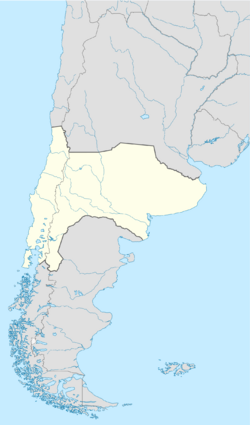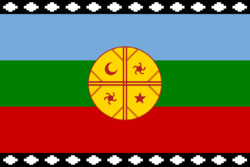Biography:Wallmapu
From HandWiki
Short description: Ancestral territory of the Mapuche people and nation, located in southern Chile and Argentina
Wallmapu is a name for the traditional territory and historical country of the Mapuche people of southern South America.[1] The term was coined in the early 1990s by Indigenist groups[2] but gained traction in the 2000s as the Mapuche conflict in Araucanía intensified.[3] Some view the Wallmapu as being composed of two main parts Ngulumapu in the west and Puelmapu in the east, with the southern part of Ngulumapu being known as Futahuillimapu.[4]
On May 19, 2022 a conference on the topic "The threat of Wallmapu" (Spanish: La amenaza de Wallmapu) was held in the city of Neuquén, Argentina.[5]
See also
- Araucanization
- Incas in Central Chile
References
- ↑ Nahuelpán, Héctor; Martínez, Edgars; Hofflinger, Alvaro; Millalén, Pablo (2021-08-19). "In Wallmapu, Colonialism and Capitalism Realign". NACLA Report on the Americas (Routledge) 53 (3): 296–303. doi:10.1080/10714839.2021.1961469.
- ↑ ""Wallmapu": Historiador chileno afirma que término "no proviene de la cultura ancestral mapuche"". T13. March 31, 2022. https://www.t13.cl/noticia/nacional/wallmapu-historiador-chileno-termino-no-proviene-cultura-ancestral-mapuche-31-03-2022.
- ↑ "Lumaco: la cristalización del movimiento autodeterminista mapuche". Revistas Usach. 2013. https://www.revistas.usach.cl/ojs/index.php/historiasocial/article/view/1553. "Fue el inicio de un desarrollo ideológico de un sector del pueblo Mapuche que señaló su anti capitalismo como un eje articulador, y a la resistencia, se simbolizó en la irrupción de la violencia política como instrumento para la reconstrucción de lo que llamaron Wallmapu."
- ↑ The brighter side of the indigenous renaissance (Part 1), 2006.
- ↑ Sánchez, Francisco (2022-05-16). "Neuquén debate sobre el proyecto de crear una nación mapuche en territorios de Argentina y Chile" (in Spanish). LM Neuquén. https://www.lmneuquen.com/neuquen-debate-el-proyecto-crear-una-nacion-mapuche-territorios-argentina-y-chile-n911886.
 |



